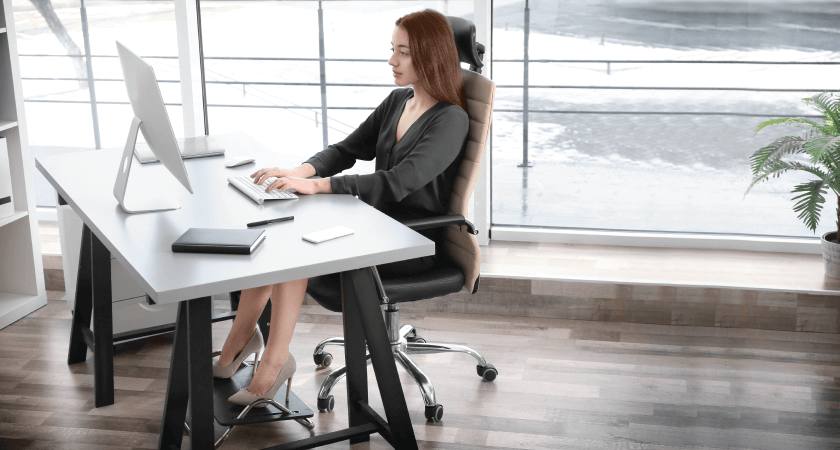
How to Relieve Tension Headaches: Effective Tips
Life without headaches? It’s possible. Discover what causes tension headaches and how to relieve the top causes of headache pain without medication.

Whether you loved working remotely (or even had the option) or missed the bustle of being in the office, one thing most people can agree on is that it had its advantages: no packing your lunch, no trips to the dry-cleaner, or sitting in traffic during long commutes.
But you may be surprised to find that in spite of its noted conveniences, working remotely has turned into a pain in the neck. Research from the National Library of Medicine showed that the pandemic worsened the musculoskeletal health of workers who had to work remotely because of shutdown restrictions.
As more and more employees leave the remote environment and return to the office, there are more considerations than just logistics affect your family, team, and yes, your body.
With so few people equipped with the same resources at home that an office setting can provide – standing desks, multiple monitors, ample lighting, replacement equipment at the ready – it’s no wonder so many remote workers experience back and neck pain (usually from things like working at their dining room table or on the couch – two office locales we as chiropractors do not recommend.)
Hunching or looking down at a laptop, not using a supportive chair (think: armrests and lumbar support) sitting too far from the screen, and other bad habits have developed for many of us, making discussions about workplace health feel more urgent than ever.
As people return to the workplace, many of them are bringing along those poor postural habits that developed at home – and the pain that comes with them.
The good news for many is that remote work also encouraged people to embrace healthy habits as well, like taking stretch breaks or going for walks during the workday – habits most offices encourage, but few people took advantage of before the pandemic.
So, the question of workplace health today is: how can we merge the flexibility offered by remote work with the resources available in an office to make sure that returning to work is better for our bodies – and not just a return to long days of sitting in front of the computer?
By now you’re likely no stranger to the concept of ergonomics – or to some of its best practices. But did you know that ergonomic injuries comprise more than 1/3 of all workplace injury and illness cases in the US? ![]()
If you haven’t paid attention to your ergonomics before, now is the time.
These tips can help you take the pain out of returning to the office – and hopefully turn it into an opportunity for better habits and a healthier you.

If you were one of the lucky people with a great home setup, going back into the office may feel especially challenging. Fortunately, most work environments now prioritize workplace health, including the comfort and safety of their employees. The next time you raid the supply closet, here’s what to look for:
Bonus points: more and more offices are providing standing desks or allowing for portable walking pads. See if your company is among them.

Our fondest hope is that as people return to the workplace, it will encourage healthy habits (didn’t we all have a walking buddy at one time or another?)
Here are our recommendations for preventing pain and protecting your health – and your posture – as you go back into the office.
Prioritize Breaks and Movement. We know this was an easy one (or seemed easier) when people were at home, but the office environment actually makes it more likely we’ll be active during the day (we’ll bet that coffee machine – and your bathroom – are now much further from your workstation.) Embrace these good workplace health habits and see what a difference they can make – in your body, and in your morale.
Looking for a great stretch you can do anywhere? We have plenty. Follow us on social for tips and exercises on everything from posture to fighting inflammation. Here’s just one of the moves we love for your return to the office.
Bonus Points: Practice good mental Ergonomics as well. Stress can be a leading cause of pain, triggering muscle tension, causing us to hold ourselves improperly – in poor posture – and causing inflammation in our bodies, which can worsen pain conditions.
Seeing your return to the workplace as an opportunity to build new, better workplace health habits is the first step (along with the right attitude.) With a good mindset, a great, ergonomic workstation (and healthy snacks) returning to the office can turn out to be the best thing for you – body and soul.
Subscribe and get news, articles & offers sent right to your inbox each month.
"*" indicates required fields
By subscribing you are agreeing to the Terms and Conditions and Privacy Policy.